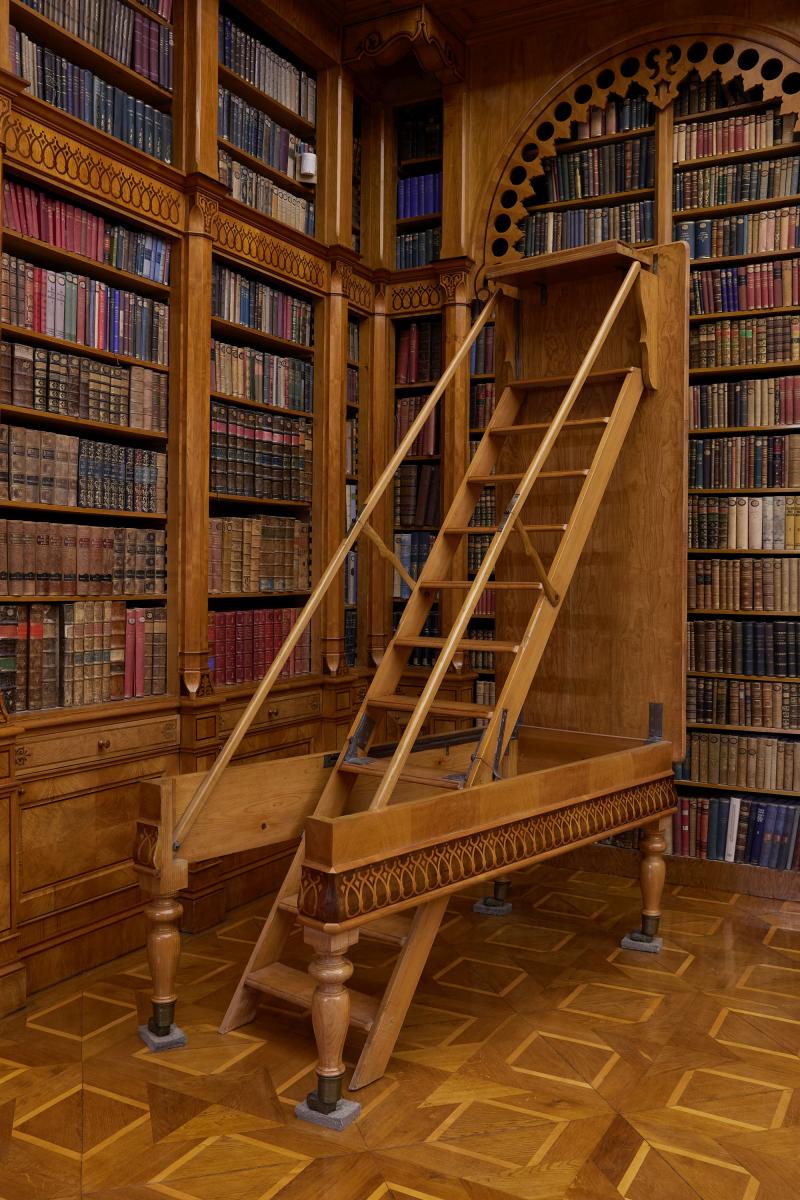
Cistercian Historic Library, Zirc
The Cistercian Abbey of Zirc was founded by King Béla III in 1182. The first monks came from Clairvaux and, in accordance with the Order's decrees, already brought with them books, such as the rulebook of the monastic order, a liturgical calendar, religious books (the Bible, works of the Church Fathers and Cistercian writers) and works of ecclesiastical and secular sciences. The Zirc Abbey, together with the one in Pilis, were the two largest Cistercian abbeys in the Kingdom of Hungary in the Middle Ages. According to research, the number of codices in the library of such an abbey can be estimated at around 100. The Zirc Abbey flourished in the 13th century, and its good management enabled it to establish a new abbey on Croatian territory (Gotó, now Kutjevo) in 1232. The 15th century was a period of decline, with the number of monks decreasing and the financial and spiritual management being taken over by governors and then by commanders. Its written records and charters disappeared without a trace during the Ottoman period. By 1552, when the Ottomans conquered Veszprém, it had become depopulated.
The abbey was re-established in the early 1700s by monks from Heinrichau in Silesia, who used the medieval stones to build a new one-storey Baroque abbey. It also housed a library, which was stocked with books brought from Silesia. The first manuscript volume catalogue, compiled in 1815, listed 2,135 works in 4,157 volumes.
The large increase in the number of books took place in the 19th century, when the Cistercians took on the task of teaching. The monks, recognising the need for a wide range of knowledge for their operation and academic work, took great care to develop the book collection. It was at this time that several private collections of academic value were added to the library’s collection, such as the bequests of József Hoffmann, a doctor from Székesfehérvár, and György Fejér, a historian.
The library’s collection was moved to the lavishly furnished Great Hall in 1857. By the end of the 19th century, the growth of the collection necessitated the opening of a new, but more simply furnished room. At this time, modern library requirements led to a change in the old order of the collection and a new storage system. The large-scale and planned development of the library was carried out by competent librarians. It was thanks to them that in the first half of the century monks and local intellectuals had access to 65,000 volumes of books and periodicals.
During the Second World War, a fighter aircraft crashed into the roof of the Great Hall, causing serious damage to its furniture and the book collection. In 1950, most monastic orders, including the Cistercians, were banned in Hungary. Fortunately, some of the decision-makers in the Hungarian education sector, who were aware of the cultural and historical importance of the collection, decided that the library should be preserved in its original location and intact. In 1953, the National Széchényi Library took over the supervision of the library, which was named after Antal Reguly, the most famous man born in Zirc. Since 1989, the Cistercian monks have been living in the abbey again, but the national library continues to maintain the historic library, which has been operating since 2011 under the name of the Cistercian Historic Library, a name that best reflects its history and character.
The collection includes 70 incunabula and 400 antique prints, several of which can only be found in this library in Hungary. The collection is extremely diverse in terms of subject matter, with many fields of study represented, from theology to history and physics.
Today the institution has a double function: as a museum, visitors can get to know one of Hungary's unique cultural and historical monuments through a guided tour; as a specialised library, it offers a dedicated reading room with a valuable collection of old books.
OPENING HOURS OF THE MUSEUM:
- from Tuesday to Sunday between 9 am and 17 pm, guided tours start at a quarter past every hour.
By joining the guided tour, visitors can explore the renovated premises of the historic library, which is also a fascinating tourist attraction, learn about the history of the library and the Order of Cistercians, see an exhibition of the library’s most items, and admire the inlaid furniture in the great hall, which has been restored in accordance with strict European standards of monument conservation. Information desks and a photo spot offer visitors a higher level of service.
Information, registration:
- Phone: 06 (88) 593-675
- E-mail: turizmus@ocist.hu
- Web: zirciapatsag.hu, facebook.com/zirciapatsag
Visitor’s Guide app available for download.
OTHER SERVICES:
Reading Room — on appointment prior to arrival.
- Opening hours: Tuesday – Friday from 9 am to 4 pm
Venue rental for events, weddings, wedding photography:
Thanks to IT upgrades, the representative, air-conditioned baroque hall is now suitable for small conferences, exhibitions, art programmes or private events such as weddings.
Contact:
- 8420 Zirc, Rákóczi tér 1.
- Tel.: 06 (88) 593-800
- Fax: 06 (88) 593-801
- E-mail: muemlekkonyvtar@oszk.hu




















